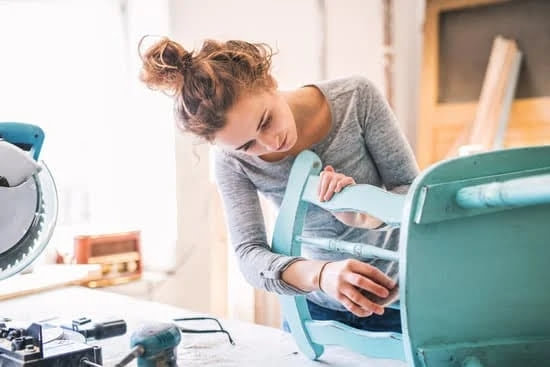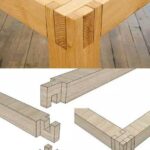Woodworking is a craft that requires precision, skill, and the right tools. One of the most essential tools in a woodworker’s arsenal are hand planes. In this article, we will delve into the world of woodworking planes and explore what planes you need for various woodworking tasks.
Hand planes are indispensable for shaping, smoothing, and refining wood surfaces. They have been used for centuries and continue to be an integral part of woodworking today. These versatile tools allow woodworkers to achieve a glass-smooth finish on their projects, while also assisting with rough stock removal, leveling surfaces, and creating flat and straight edges.
But with so many different types of planes available, how do you know which ones are essential for your woodworking projects? It’s important to select the right planes based on your specific task at hand.
In this article, we will not only cover the basic types of planes every woodworker should have in their toolkit, but also explore specialty planes for more intricate tasks. From smoothing planes to jointer planes and router planes to shoulder planes, we will highlight their unique features and applications.
So whether you’re just starting out in woodworking or looking to expand your collection of hand planes, this article will serve as a comprehensive guide to help you understand the different types of planes available, their functions, and how to select the right ones for your woodworking needs. It’s time to embark on a journey through the world of essential hand planes that will take your woodworking skills to new heights.
Essential Types of Planes for Woodworking
In the world of woodworking, hand planes are essential tools for shaping, smoothing, and refining wood surfaces. They offer precision and control that power tools often cannot match. However, with a wide variety of planes available, it can be overwhelming to know which ones are necessary for your woodworking projects. In this section, we will explore three essential types of planes that every woodworker should have in their arsenal: smoothing planes, jack planes, and jointer planes.
1. Smoothing Plane: The smoothing plane is designed to achieve a glass-smooth finish on wood surfaces. It has a short sole and a finely tuned mouth opening, allowing it to create thin shavings with ease. This plane is commonly used after initial shaping or rough stock removal to prepare the surface for final finishing. It excels at removing fine irregularities left by other planes and leaving behind a polished surface.
2. Jack Plane: The jack plane is a versatile tool suitable for rough stock removal and leveling surfaces. It is larger than the smoothing plane and has a slightly curved cutting edge called a camber. This camber helps prevent the corners of the blade from digging into the wood when planing across the grain. The jack plane’s size and wide mouth make it ideal for quickly removing material while still providing enough control for moderate smoothing tasks.
3. Jointer Plane:The jointer plane is essential for creating flat and straight edges in wooden boards and panels. It has a long sole which allows it to span over uneven surfaces, ensuring even removal of high spots as you traverse along the length of the workpiece. When planing edges that will be joined together, such as in panel glue-ups or tabletops, a jointer plane ensures they align perfectly flush.
| Type of Plane | Key Features and Uses |
|---|---|
| Smoothing Plane | Achieving a glass-smooth finish, removing fine irregularities |
| Jack Plane | Rough stock removal, leveling surfaces, moderate smoothing tasks |
| Jointer Plane | Creating flat and straight edges in wooden boards and panels for accurate joinery |
While these three types of planes provide the foundation for woodworking, there are many other specialty planes available for specific tasks. In the next section, we will explore some of these specialty planes and their unique uses in woodworking projects.
Specialty Planes for Specific Woodworking Tasks
SPECIALTY PLANES FOR SPECIFIC WOODWORKING TASKS
When it comes to woodworking, having a variety of hand planes in your arsenal can significantly enhance your craftsmanship and allow you to tackle a wide range of tasks. While the essential smoothing plane, jack plane, and jointer plane are versatile options that cover many general woodworking needs, there are also specialty planes designed for specific tasks. In this section, we will explore two such specialty planes: the router plane and the block plane.
Router Plane
The router plane is a versatile tool that excels in cleaning up dadoes, grooves, and other intricate woodworking tasks. Its construction includes a narrow blade set within a frame or body with handles on each side for easy control and maneuverability. The blade extends through the sole of the tool, allowing precise depth control as it shaves away material.
One of the key advantages of a router plane is its ability to restore consistent dimensions throughout various woodworking projects. This makes it particularly useful when fitting joints or creating rabbets where precision is critical. With a router plane, woodworkers can achieve clean and accurate cuts while maintaining strict tolerances.
Block Plane
Another essential specialty plane in woodworking is the block plane. This compact tool is perfect for end-grain work, chamfering edges, and fitting joints. Known for its versatility and ease of use, the block plane features a low-angle blade with an adjustable throat opening that allows fine-tuning of shaving thickness.
The compact size of the block plane enables woodworkers to handle delicate or small-scale work with precision. It also serves as an ideal choice for planing end grain due to its low cutting angle and slight radius on the cutting edge. Whether you need to smooth rough surfaces or trim pieces to fit perfectly together, having a quality block plane in your workshop will prove invaluable.
By incorporating specialty planes like the router plane and block plane into your woodworking toolkit, you can tackle more intricate tasks with ease. These planes provide greater control, precision, and efficiency for achieving outstanding results in specific woodworking applications.
Sources:
- “Stanley No. 71 Router Plane” by By Tim Heil – Own work. Licensed under CC BY-SA 3.0 via Wikimedia Commons.
- “Millers Falls Co.” by HeatedPickles – Own work. Licensed under CC0 1.0 Universal via Wikimedia Commons.
Selecting and Maintaining Your Planes
When it comes to selecting the right planes for your woodworking projects, there are a few key factors that you need to consider. The first is your own experience level as a woodworker. If you are just starting out, it may be best to begin with a basic set of planes that will cover most common woodworking tasks. As you gain more experience and skills, you can gradually invest in additional specialized planes for more specific purposes.
Budget is another important consideration when choosing planes. Hand planes come in a wide range of prices, from affordable options for beginners to high-end, professional-grade planes. While it may be tempting to opt for the cheapest options available, keep in mind that investing in quality tools will often pay off in the long run. High-quality planes are typically more durable and better designed, resulting in superior performance and longevity.
Lastly, consider the requirements of your specific woodworking project. Different types of woodworking tasks call for different types of planes. For instance, if you primarily work on smaller projects or focus on finer detail work, a smoothing plane will likely be essential for achieving a glass-smooth finish. On the other hand, if you frequently engage in rough stock removal or leveling surfaces, a jack plane would be more suitable.
Once you’ve selected your planes, proper maintenance is crucial for keeping them in optimal condition and ensuring efficient cuts. Regular sharpening and honing are vital for maintaining sharp blades. By using honing guides, you can maintain consistent bevel angles and achieve razor-sharp edges on your plane blades. There are various sharpening stones available on the market such as water stones and oil stones – experiment with different types to find what works best for you.
In addition to sharpening, periodic cleaning is necessary to prevent rust formation on your plane blades and bodies. It is also important to store your planes properly in a dry environment to avoid moisture damage. By following these maintenance guidelines, you can extend the lifespan of your planes and ensure that they continue to deliver exceptional performance for years to come.
Recommended Plane Brands and Models
Some of the top-rated plane brands in the woodworking industry are known for their commitment to quality, craftsmanship, and precision. They produce hand planes that are highly regarded and trusted by woodworkers around the world. Here are a few recommended plane brands:
- Lie-Nielsen Toolworks: Lie-Nielsen is renowned for its high-quality hand planes that are made with meticulous attention to detail. Their planes are known for their exceptional performance and durability. Lie-Nielsen offers a wide range of planes suitable for various woodworking tasks, from smoothing planes to joiner planes.
- Veritas: Veritas is another reputable brand that produces top-notch hand planes. They focus on innovation and functionality in their designs, resulting in tools that offer outstanding performance. Veritas offers a diverse selection of planes, including specialty models like router planes and block planes.
- Stanley: Stanley has been a trusted name in the woodworking industry for decades. They have a long-standing reputation for producing reliable and affordable hand planes. Stanley offers a range of traditional bench planes that are suitable for both beginners and experienced woodworkers.
When it comes to specific models, there are several highly regarded hand planes favored by woodworkers:
- Lie-Nielsen No. 4 Smoothing Plane: This smoothing plane is known for its precision and ability to create an immaculate glass-smooth finish on wood surfaces.
- Veritas Low-Angle Jack Plane: The low-angle jack plane from Veritas is versatile and suitable for a wide range of woodworking tasks, including rough stock removal and leveling surfaces.
- Stanley No. 92 Shoulder Plane: The Stanley No. 92 shoulder plane is a popular choice among woodworkers for its ability to accurately finish rabbets, dadoes, and tenons.
Remember that choosing the right hand plane depends on your personal preferences as well as the specific woodworking tasks you will be performing.
Essential Accessories for Maximizing Plane Performance
To maximize the performance of your hand planes and achieve exceptional woodworking results, it is essential to have the right accessories. These accessories not only enhance the functionality of your planes but also ensure that they remain in optimal condition. Here are some essential accessories that every woodworker should consider:
Honing Guides and Sharpening Stones
Honing guides play a crucial role in maintaining consistent bevel angles while sharpening plane blades. They provide stability and control, resulting in precise and uniform edges. There are different types of honing guides available, ranging from simple clamping guides to more advanced angle-setting guides. Choose one that suits your preference and needs.
Sharpening stones are another indispensable accessory for maintaining razor-sharp plane blades. Different types of sharpening stones are available, including water stones and oil stones. Water stones offer fast cutting action, while oil stones are more durable. It is recommended to have a variety of grits available to accommodate different levels of sharpening requirements.
Shooting Boards and Bench Hooks
Shooting boards and bench hooks are useful accessories that enhance accuracy and stability during planing tasks. A shooting board is a platform with a fence or guide that allows you to plane the ends of boards or make precise miter cuts. It ensures clean cuts with perfect 90-degree angles.
Similarly, a bench hook is a simple yet effective accessory used for holding small workpieces securely on a workbench while planing or sawing them. With its non-slip surface and bracing against the edge of the workbench, it provides stability and prevents the workpiece from moving.
Both shooting boards and bench hooks can be easily made using scrap wood, making them cost-effective additions to your woodworking setup.
By investing in these essential accessories, you can greatly enhance the performance of your hand planes while ensuring their longevity. They not only make sharpening easier but also improve accuracy and safety during planing tasks. With proper maintenance and the right accessories, your hand planes will always be ready to deliver outstanding woodworking results.
Safety Tips for Using Hand Planes
When using hand planes in woodworking, it is important to prioritize safety to prevent accidents and injuries. The following safety tips will help you ensure a secure and successful woodworking experience:
- Wear appropriate personal protective equipment (PPE): Always wear safety glasses or goggles to protect your eyes from flying wood chips and debris. Additionally, consider wearing hearing protection as hand planes can produce loud noises. If necessary, use respiratory protection to avoid inhaling dust particles.
- Maintain a secure grip: Make sure you have a firm and comfortable grip on the plane handle to maintain control during planing operations. Avoid gripping too tightly as this can lead to fatigue and lessen precision. It is also advisable to keep your hands away from the path of the blade.
- Use proper technique: Follow correct planing techniques to minimize the risk of accidents. Ensure that the blade is sharp and properly secured before starting any planing task. Lighten your pressure when pushing forward with the plane to avoid sudden slips or jerks.
- Secure your workpiece: Prevent movement or slipping of the workpiece by securely clamping it to a workbench or using other methods such as clamping jigs or bench hooks. This will enhance stability and accuracy while using the hand plane.
- Work in a well-ventilated area: Whenever possible, work in a space with adequate ventilation or set up ventilation systems like fans or air purifiers to minimize the inhalation of sawdust and other airborne particles.
Following these safety tips will help ensure that you can safely enjoy working with hand planes while achieving high-quality woodworking results.
| Safety Tips for Using Hand Planes |
|---|
| – Wear appropriate personal protective equipment (PPE) |
| – Maintain a secure grip |
| – Use proper technique |
| – Secure your workpiece |
| – Work in a well-ventilated area |
Conclusion
In conclusion, selecting the right planes for your woodworking projects is essential for achieving exceptional results. Throughout this article, we have explored the various types of planes and their specific functions in shaping, smoothing, and refining wood surfaces. From the smoothing plane that provides a glass-smooth finish to the jointer plane that ensures flat and straight edges, each type of plane serves a unique purpose.
Additionally, we delved into specialty planes such as the router plane, block plane, and shoulder plane, which offer precise depth control, versatility in end-grain work and fitting joints. These planes allow woodworkers to tackle intricate tasks with accuracy and efficiency.
When choosing your planes, factors such as experience level, budget constraints, and project requirements should be taken into consideration. Furthermore, proper maintenance techniques like regular sharpening and honing are crucial to keep your hand planes in optimal condition.
To aid you in your woodworking journey, we recommended reputable brands known for their craftsmanship and precision. Exploring popular hand plane models will provide a starting point in finding the perfect tools for your needs.
Lastly, always prioritize safety when using hand planes. Maintaining a secure grip on the plane while using appropriate protective gear is crucial to avoid any potential risks or hazards.
In summary, investing in high-quality planes will greatly enhance your woodworking skills and craftsmanship. So don’t hesitate to explore different types of planes and experiment with their uses-it’s time to take your woodworking to new heights.
Frequently Asked Questions
What plane should I start woodworking with?
When starting out in woodworking, it’s generally recommended to begin with a bench plane. A bench plane is versatile and can handle a wide range of tasks, making it an ideal choice for beginners. Specifically, a No.
5 or No. 4 size bench plane is commonly recommended as they are large enough to effectively flatten and smooth wood surfaces, yet still manageable for most users. These planes allow you to perform basic tasks such as dimensioning lumber, smoothing rough surfaces, and chamfering edges.
What are the most important planes for woodworking?
The most important planes for woodworking depend on the specific tasks you plan to undertake. However, there are three key planes that every woodworker should have in their arsenal: a bench plane, a block plane, and a jointer plane. As mentioned earlier, the bench plane is crucial for general purpose work like flattening and smoothing surfaces.
The block plane is smaller and handy for trimming end grain, working on small projects, or fine tuning joinery. Lastly, the jointer plane is longer and designed to straighten and flatten long boards or large panels with precision.
What size plane for woodworking?
The size of the plane you choose for woodworking largely depends on the scale of your projects and the tasks at hand. Smaller planes such as block planes are useful for finer detail work or smaller projects where maneuverability is important.
On the other hand, larger planes like jointer or scrub planes are more suitable for larger-scale tasks such as flattening wide boards or removing substantial amounts of material quickly and efficiently. It’s essential to select a plane size that aligns with the scope of your woodworking projects while also considering factors like your physical capabilities and personal preferences when working with different sizes of planes.

Hi everyone! I’m a woodworker and blogger, and this is my woodworking blog. In my blog, I share tips and tricks for woodworkers of all skill levels, as well as project ideas that you can try yourself.





